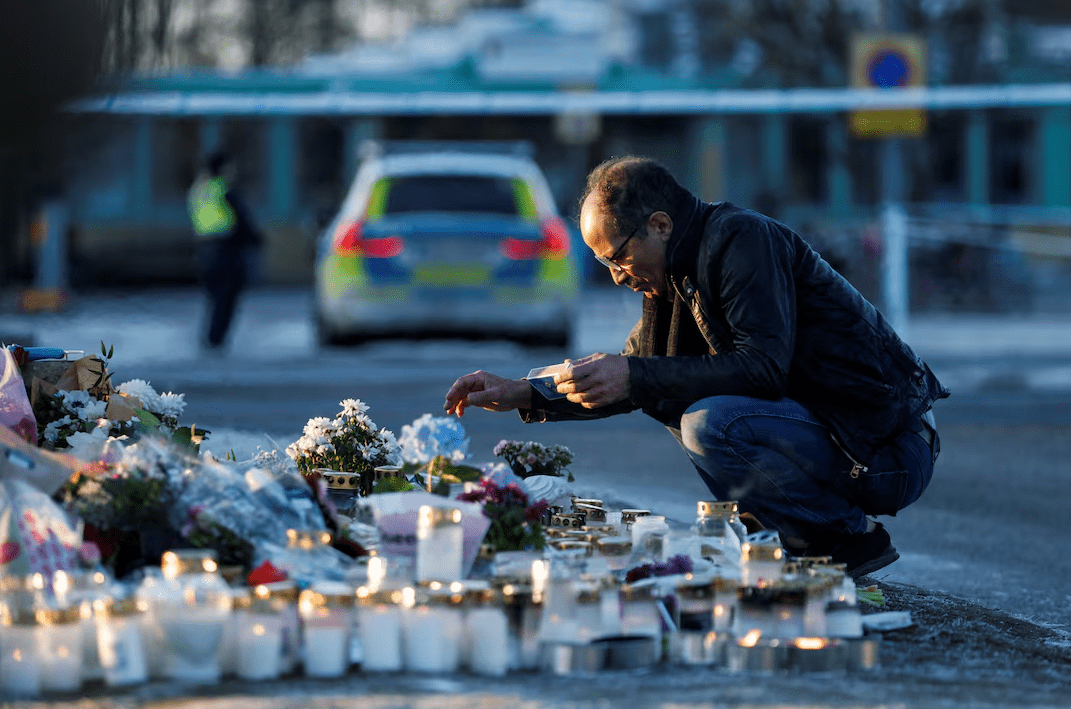
Sweden’s government is planning to strengthen gun regulations after a mass shooting at an adult education center in Örebro left ten people dead, making it one of the deadliest attacks in the country’s history.
The shooting occurred on Tuesday at Campus Risbergska, where a 35-year-old Swedish man, identified by local media as Rickard Andersson, allegedly used multiple legally owned firearms before turning a weapon on himself. Police confirmed on Friday that the suspected shooter was among the deceased but have not yet released the names of the victims.
Authorities stated that seven women and four men, aged between 28 and 68, lost their lives. Some of the victims were Christians who had previously fled persecution in Syria. However, police have found no evidence indicating a political or ideological motive for the attack.
Government Response and Policy Changes
In response to the tragedy, Prime Minister Ulf Kristersson acknowledged the deep impact the attack has had, particularly on Sweden’s immigrant communities, urging unity in the wake of the violence. Justice Minister Gunnar Strömmer announced that the government, with support from far-right allies in parliament, plans to introduce stricter vetting for gun license applicants and ban certain semi-automatic weapons.
One focus of the proposed legislation is the AR-15 rifle, a firearm commonly associated with mass shootings in the United States. While authorities have not confirmed the specific weapons used in the Örebro attack, Strömmer stated that banning AR-15-style rifles would be a preventive measure, citing their potential for modification into more lethal forms.
Sweden’s main opposition party, the Social Democrats, expressed support for the government’s proposal but pushed for broader reforms. Party representative Theresa Carvalho emphasized that February 4, the day of the shooting, marked a turning point in Sweden’s approach to gun control.
School Security Under Scrutiny
The attack has also reignited discussions about security in Swedish schools, which typically have minimal access restrictions. The government is considering accelerating legislation that would make it easier for schools to install surveillance cameras to enhance safety.
While Sweden has a high rate of legal gun ownership compared to other European nations—primarily for hunting—gang-related firearm crimes have raised concerns about overall gun control. According to The Small Arms Survey, Sweden had approximately 2.3 million civilian-owned firearms in 2017, equating to roughly 23 guns per 100 people.
As police continue their investigation into the shooter’s background, including reports that he was a former student at the school, Sweden remains in mourning. The tragedy has sparked a national conversation about firearm access and public safety, with potential policy changes on the horizon.

